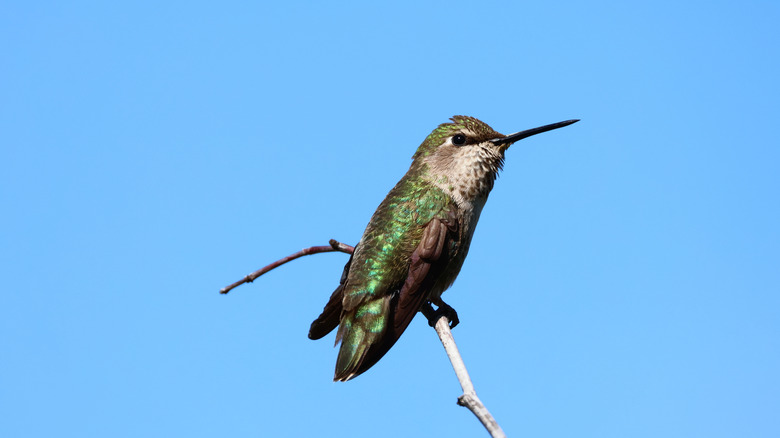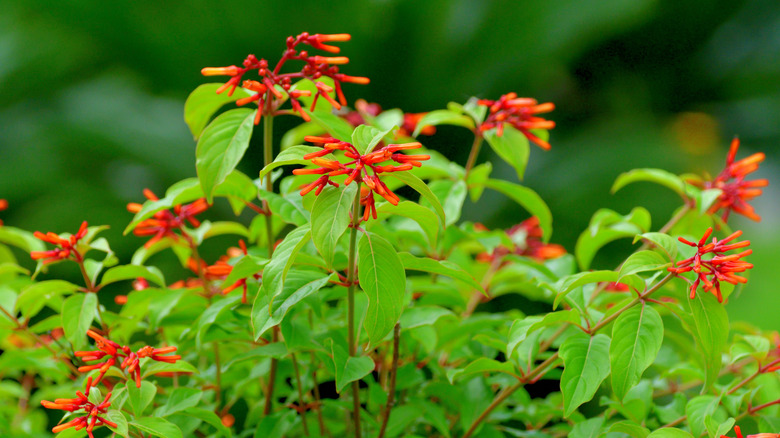Invite Hummingbirds To Your Yard With This Low-Maintenance Plant
If you want to turn your yard into a hummingbird hot spot without spending hours in the garden, there is a low-maintenance plant that you will love. The firebush (Hamelia patens) is a gorgeous plant that hummingbirds cannot resist. If you live in the right region of the country, this beauty takes care of itself and is sure to attract pollinators to your garden.
The firebush has everything that hummingbirds love. Its bright tubular flowers are perfectly shaped for hummingbirds' long and skinny beaks. Firebush flowers are a deep red or orange color, which hummingbirds not only love, but see best. Plus, the firebush blooms from spring through fall, when migrating hummingbirds make their way to the United States to breed. But the true reason hummingbirds love these pretty flowers is that they are filled with nectar. Firebush is a wonderful choice to start a pollinator garden, attracting not only hummingbirds but also bees and butterflies.
Firebush is native to the southern regions of the United States. In those areas, shrubs grow quickly and easily. However, they do not do well in cold weather and can be killed by frost. It is best to grow this pollinator magnet in climate zones 9 to 11, and in some cases in zone 8. If you live in other zones, you can still grow firebush, but it would not be considered a "low-maintenance" task, since you will need to grow it in pots and overwinter it before temperatures start dropping.
How to grow firebush to attract hummingbirds
To grow this low-maintenance shrub in its native warmer climates, start by choosing the appropriate spot in your garden. Firebushes are not too picky. They thrive in either sunny spots or partial shade. As for soil, they do not have a strong preference for acidity levels but do best in well-draining soil where their roots do not risk sitting in water too long.
The well-draining soil will allow you to water firebush shrubs deeply during their first few years, which helps develop strong roots. Every few weeks, water the plant thoroughly so that the water can reach the roots, and make sure the soil has dried out before watering again. This is a perennial, meaning it will die in the fall and come back every spring without you having to plant a new one. Once the shrub is established (after returning for a few seasons), it will be resistant to droughts and require even less maintenance.
You can buy a small shrub from a nursery and place it in the ground between spring and summer, or you can propagate a firebush from seeds between spring and fall. Whichever method you choose, firebush can grow quickly and become large, so plant new shrubs about 5 feet away from each other. Expect it to reach at least 6 feet on its own, or more if you are using a trellis system (up to 15 feet). Keep your shrub in check by pruning it. In some cases, pruning perennials in summer can encourage show-stopping blooms the following season, but with the firebush, it is best to do this toward the end of winter.

